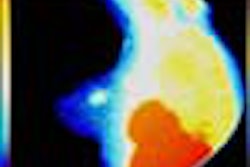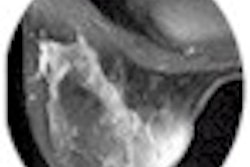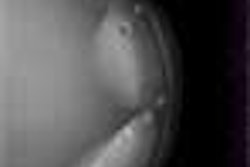VIENNA - German researchers are bolstering the cause of full-field digital mammography (FFDM), reporting good image quality and lesion detectability in 100 patients who were screened with digital as well as screen-film mammography (SFM). Dr. Silvia Obenauer presented the results of her group’s study at the European Congress of Radiology meeting on Saturday.
"We found that FFDM had several advantages, making skin thickening easier to see and resulting in more accurate BIRADs classifications. In addition, the image quality was consistently high," said Obenauer, who is from Georg August University in Gottingen.
In this study population, digital and conventional mammography was performed on 50 patients, with breast tumors proved by cytology or histology. In addition, digital mammograms and their corresponding screen-film tests were reviewed in another 50 patients. These screen-film results were not older than 1.5 years, Obenauer said.
For the FFDM exam, the researchers used a Senographe 2000D system manufactured by GE Medical Systems of Waukesha, WI. The system uses an amorphous silicon detector with a pixel size of 100 microns and an image matrix of 1,900 x 1,300 pixels.
Three readers evaluated the images for contrast, exposure, and artifacts. Details such as skin, retromamillary space, and parenchymal structure were also judged. Finally, the detectability of microcalcifications and lesions were compared to histology.
According to the results, image contrast was considered good in 99% of the digital images, and was judged unsatisfactory in 1%. In comparison, the readers found contrast to be good in 76% of the screen-film images and unsatisfactory in 4%.
The digital images were improperly exposed in 4% of the cases, but were deemed of sufficient quality after post-processing. In the screen-film system, improper exposure occurred in 18% of the images, Obenauer reported.
Finally, artifacts were present in 78% of the conventional mammograms, while none were found in the digital images. Anatomic regions, such as retromamillary space, were depicted better on digital film than screen-film, Obenauer said.
Lesion detection was equal between the two systems, with observers noting 39 invasive ductal carcinoma, six invasive lobular carcinoma, four ductal carcinoma in situ, and one radial scar.
Session moderator Arnold Skjennald asked Obenauer about the learning curve involved in reading digital images. Obenauer said that the observers had at least four months´ experience in reading digital mammograms before the study was started. They also knew that there would be malignant cases in the 100-person patient population, but were not aware that half of the images would be scans of normal volunteers.
By Shalmali Pal
AuntMinnie.com staff writer
March 4, 2001
Related Reading
Auto spot compression mammography could aid imaging of dense breast tissue, January 30, 2001
Full-field digital mammography compares well to screen-film, November 11, 2000
Click here to post your comments about this story. Please include the headline of the article in your message.
For more coverage of the European Congress of Radiology, visit our RadCast@ECR special edition.
Copyright © 2001 AuntMinnie.com



















